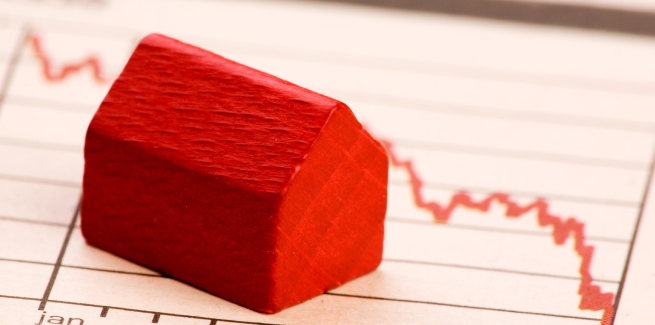A research note from CBA head of Australian economist Gareth Aird has outlined an updated outlook on house prices, switching from the bank’s previous expectation that house prices would see a 7 per cent uptick in 2022, before falling by 10 per cent in 2023.
The expected outcome now is that national house prices, as measured by CoreLogic’s eight capital city average benchmark index, will end 2022 flat, before declining by 8 per cent next year.
The 8 per cent correction in 2023 is a smaller decline percentage-wise from the bank’s previous forecast of a 10 per cent fall for the year, but it had also previously assumed a climb of around the same size during 2022.
Because prices are now projected to flatline over 2022 before falling, the new forecast would mean they end 2023 at a lower level than previously anticipated.
House prices are also forecast to hit their peak in mid-2022, when CBA expects the Reserve Bank of Australia (RBA) to commence tightening its monetary policy.
The RBA is expected to take the cash rate to 1.25 per cent by the end of the first quarter, 2023, before remaining on hold for the rest of the year.
In November, the bank’s economists tipped that house prices would continue to rise through the first half of the 2022 year, but at a slower pace.
However, Australian home price growth has slowed considerably in the first two months, with CoreLogic recording a 0.3 per cent incline in property prices across the eight capital cities in February.
In contrast, the average monthly dwelling price in 2021 was 1.6 per cent.
National prices are still expected to continue to edge higher, but the CBA economists have now predicted dwelling prices have likely peaked in the NSW and Victorian capitals.
During February, dwelling prices in Sydney declined by 0.1 per cent, while Melbourne’s values were flat.
In contrast, house prices rose in Brisbane (up 1.8 per cent), Adelaide (1.5 per cent) and Hobart (1.2 per cent). More modest growth was recorded in Darwin (up 0.4 per cent), Canberra (0.4 per cent) and Perth (0.3 per cent).
“The cooling influence we anticipated has been a lot stronger in Sydney and Melbourne, while price rises have continued to rise briskly in [other] capital cities,” the CBA note said.
“Indeed the data today paints the picture of a divergent housing market.”
CBA has tipped Sydney and Melbourne will end the year lower, both down 3 per cent, given they may have already peaked – but the other state capitals are expected to travel further in the cycle.
Brisbane is tipped to see a 7 per cent rise in house prices in 2022, before seeing a 7 per cent fall in 2023. Adelaide is forecast to have a 6 per cent climb this year, before dropping by 8 per cent in 2023 and Perth is expected to inch upwards by 2 per cent, before declining by 6 per cent.
Hobart is expected to see a 7 per cent incline, before an 8 per cent fall, while Canberra is anticipated to jump up 5 per cent, before diminishing by 9 per cent.
Darwin is forecast to see a 2 per cent rise, before an 8 per cent decline.
Meanwhile, regional markets have continued to climb. The combined regions home price index rose by 1.6 per cent in February.
“Stock remains low in regional Australia and many retirees are moving out of the major capital cities to regional Australia, particularly the coastal fringes,” the CBA report said.
“This has supported strong price gains.”
[Related: Dwelling build approvals collapse over January]
 ;
;
